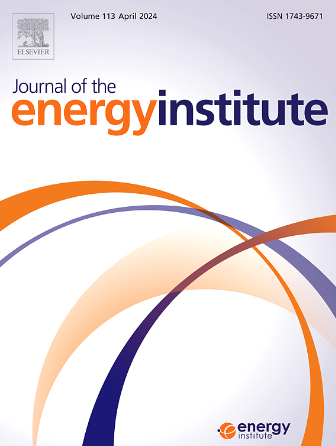Turbulent jet development of active pre-chamber fueled with zero-carbon fuel blends
IF 5.6
2区 工程技术
Q2 ENERGY & FUELS
引用次数: 0
Abstract
Active pre-chamber turbulent jet ignition has the potential to enhance the combustion of low-reactivity fuels. However, the related fundamental studies on the jet ignition mechanism are inadequate, especially for the independent effects of the zero-carbon fuel blends on the jet development characteristics, isolating the impact of the main chamber combustion. In this work, the effects of the fuel compositions ranged from the 30%H2+70%NH3 blend to pure H2 and also comprised the pure CH4 for comparison and the initial pressures in the pre-chamber are studied by the two-pass high-speed Schlieren method. The results show that the hot turbulent jet developments present great differences for the pre-chamber charged with various H2+NH3 blends across the hydrogen blend ratios varying from 30 % to 100 % in volumetric fraction. Moreover, the evolutions of the hot turbulent jet from the pre-chamber charged with the 50%H2+50%NH3 blend and pure CH4 are similar. As the initial pressure increases, there is a gradual deceleration in the development of the pre-chamber jet, and the turbulent jet development characteristics depend on the pressure ratio rather than the pressure difference across the pre-chamber and main chamber. This study could provide important insights for the development of zero-carbon fuel engines.
使用零碳混合燃料的主动式前置腔的湍流喷射发展
主动式前室湍流喷射点火具有增强低反应燃料燃烧的潜力。然而,对射流点火机理的相关基础研究并不充分,尤其是对零碳燃料混合物对射流发展特性的独立影响研究不足,无法隔离主腔燃烧的影响。在这项工作中,采用双通道高速 Schlieren 方法研究了从 30%H2+70%NH3 混合燃料到纯 H2 的燃料成分的影响,还包括纯 CH4 的影响以进行比较,并研究了前腔的初始压力。结果表明,在充入各种 H2+NH3 混合物的预室中,热湍流射流的发展在氢气混合物的体积分数比例从 30% 到 100% 之间存在很大差异。此外,充入 50%H2+50%NH3 混合物和纯 CH4 的前置室的热湍流射流的演变过程相似。随着初始压力的增加,前室射流的发展速度逐渐减慢,湍流射流的发展特征取决于压力比,而不是前室和主室之间的压力差。这项研究可为零碳燃料发动机的开发提供重要启示。
本文章由计算机程序翻译,如有差异,请以英文原文为准。
求助全文
约1分钟内获得全文
求助全文
来源期刊

Journal of The Energy Institute
工程技术-能源与燃料
CiteScore
10.60
自引率
5.30%
发文量
166
审稿时长
16 days
期刊介绍:
The Journal of the Energy Institute provides peer reviewed coverage of original high quality research on energy, engineering and technology.The coverage is broad and the main areas of interest include:
Combustion engineering and associated technologies; process heating; power generation; engines and propulsion; emissions and environmental pollution control; clean coal technologies; carbon abatement technologies
Emissions and environmental pollution control; safety and hazards;
Clean coal technologies; carbon abatement technologies, including carbon capture and storage, CCS;
Petroleum engineering and fuel quality, including storage and transport
Alternative energy sources; biomass utilisation and biomass conversion technologies; energy from waste, incineration and recycling
Energy conversion, energy recovery and energy efficiency; space heating, fuel cells, heat pumps and cooling systems
Energy storage
The journal''s coverage reflects changes in energy technology that result from the transition to more efficient energy production and end use together with reduced carbon emission.
 求助内容:
求助内容: 应助结果提醒方式:
应助结果提醒方式:


